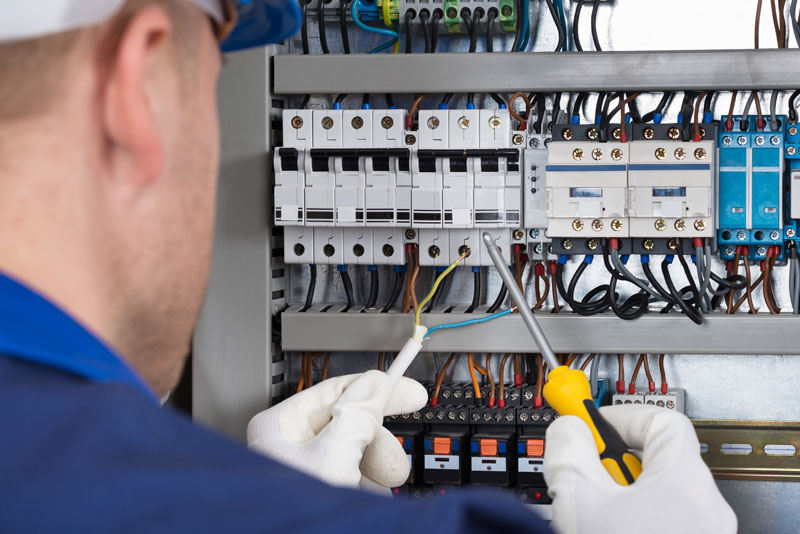Demystifying Electric Installment: Understanding Codes and Regulations for a Lawful and Safe Arrangement
In the realm of electric installment, adherence to codes and policies is paramount to guarantee both legitimacy and safety. The intricacies bordering electrical job can be overwhelming, however acquainting oneself with the recognized standards is vital to browsing this area with self-confidence. By comprehending the ins and outs of the National Electric Code and regional building ordinance, people can ensure that their installments meet needed precaution and remain in compliance with the regulation. However, the journey to debunking electric installment surpasses simple knowledge with guidelines; it requires a profound understanding of just how to execute safe electric practices properly.
Significance of Electric Codes
The adherence to electric codes is crucial in making sure the safety and security and integrity of electrical installations. Electric codes function as a collection of standards and standards that determine the appropriate layout, installation, and upkeep of electric systems. These codes are established to reduce the danger of electric hazards, fires, and other safety issues that may develop from faulty electrical work.

Moreover, electric codes are frequently updated to incorporate new technologies, best techniques, and safety actions. Staying updated with these codes is essential for experts in the electrical sector to make sure that their work meets the most recent security requirements. Ultimately, the relevance of electrical codes hinges on developing a secure and efficient electrical facilities that profits both people and communities.
Key Laws for Safety And Security
Numerous fundamental guidelines govern the safety and security requirements in electrical setups. One crucial law is the National Electric Code (NEC), which offers standards for safe electric design, installation, and examination to safeguard people and property from electric dangers. The NEC covers elements such as electrical wiring methods, grounding, overcurrent security, and equipment setup to ensure a risk-free electric system.
One more essential regulation is the Occupational Safety and Health Administration (OSHA) criteria, which concentrate on the safety of employees involved in electrical installments (BRE Electrical). OSHA laws consist of requirements for appropriate training, safety and security procedures, and personal safety equipment to stop work environment mishaps and injuries
Moreover, the International Electrotechnical Commission (IEC) standards intend to harmonize electrical installment guidelines on a global range. These criteria address issues like electrical equipment safety, electromagnetic compatibility, and power performance to advertise harmony and safety and security in electric setups worldwide.
Compliance with these essential laws is vital to ensure the safety and security and legality of electrical setups, protecting both people and residential property from the risks linked with electrical power.
Comprehending National Electric Code
Key guidelines such as the National Electrical Code (NEC) give necessary standards for secure electrical style, installation, and inspection to make certain the protection of people and building from electrical threats. The NEC, likewise recognized as NFPA 70, is a detailed set of standards for electrical installments that are upgraded every 3 years. It is developed by the National Fire Defense Association (NFPA) and is commonly embraced across the United States.
The NEC covers numerous elements of electrical job, including circuitry methods, grounding, overcurrent security, and devices installation. It intends to secure individuals and property by dealing with content possible threats related to electric systems. Compliance with the NEC is typically enforced by local authorities having jurisdiction (AHJs), such as developing code officials and inspectors.
Understanding the NEC is critical for electrical service providers, developers, and assessors to Find Out More make sure that setups meet the essential safety demands. By adhering to the NEC standards, professionals can help stop electrical accidents and make sure the reliability of electric systems in property, business, and commercial settings.

Conformity With Regional Building Ordinance
Understanding and sticking to neighborhood building ordinance is essential for making sure the security and conformity of electrical installations within a particular territory (BRE Automation Australia). Local building ordinance differ from one community to another, and they are established to protect the well-being of occupants and homes. These codes lay out details needs for electrical setups, such as the kind of wiring to be utilized, placement of outlets, grounding techniques, and tons capacities. By abiding by regional building ordinance, electricians can make certain that installations are done appropriately and fulfill the required security standards.
When it comes to electrical installments, failure to conform with neighborhood structure codes can result in major effects. Non-compliant setups might present safety hazards, enhance the threat of electrical fires, and lead to expensive penalties or legal his response concerns.
Making Certain Safe Electrical Practices
Exercising strict adherence to established safety and security protocols is crucial in the area of electric installations to reduce prospective threats and ensure the wellness of people and residential or commercial properties. Security in electric work incorporates various aspects, starting with the proper training of workers involved in setup, maintenance, and repair service. By prioritizing safe practices, electrical installments can work successfully while lessening the likelihood of mishaps or damages.
Final Thought
To conclude, adherence to electrical codes and policies is important for making certain the safety and validity of electric installations. Comprehending the National Electric Code and compliance with neighborhood building codes are vital for a safe arrangement. By adhering to these guidelines and practicing safe electric practices, people can avoid prospective hazards and guarantee the proper performance of their electrical systems.